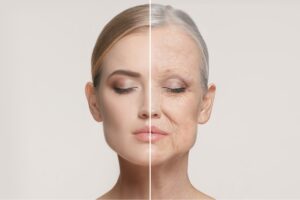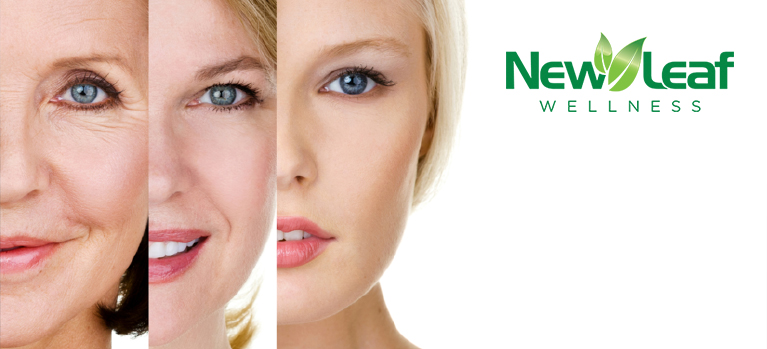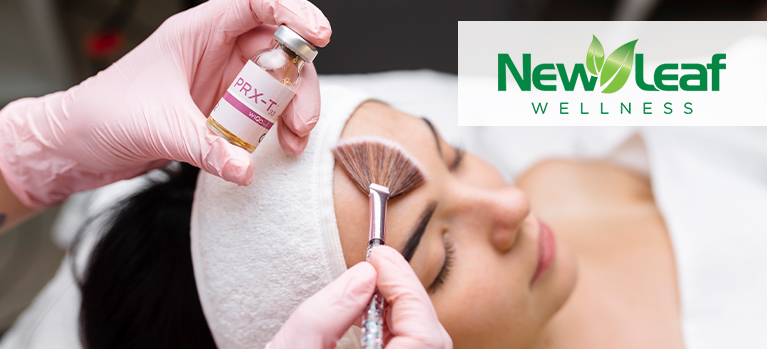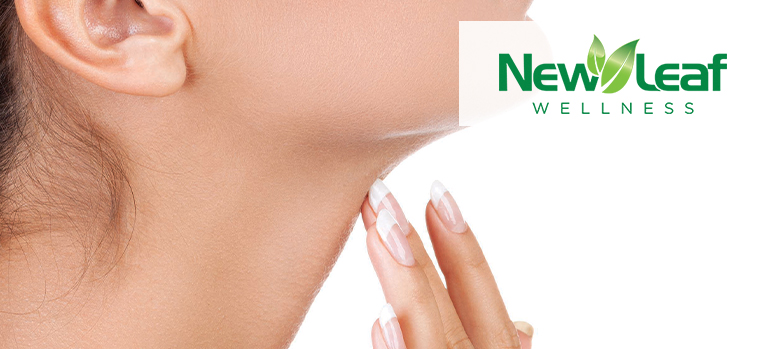Feel, Look, and Live Your BEST!
Category: Women
The Magic of the Holidays
Pairing New Leaf Wellness Treatments
With Holiday Movies
As the holiday season blankets us in a tapestry of traditions and tales, we embark on a whimsical journey that intertwines the world of wellness treatments with the enchanting narratives of beloved holiday movies. From natural hormone therapies echoing the transformations in “The Holiday” to advanced weight loss aligning with Buddy’s journey in “Elf,” join us in this festive pairing adventure. Each treatment finds its cinematic counterpart, resonating with the themes of love, rediscovery, and the magical spirit of the holidays. So, grab a cup of cocoa, settle in, and let the magic of wellness meet the enchantment of timeless holiday classics.
- Natural Hormone Therapy – “The Holiday” is a movie that revolves around personal transformations and new beginnings.
- Low-T Treatment – “Jingle All the Way” for a boost in energy and determination, much like Arnold Schwarzenegger’s character seeking the perfect gift.
- Erectile Dysfunction – “Love Actually” captures various aspects of love and relationships, including challenges that couples may face.
- Low Libido – “The Santa Clause” addresses themes of rediscovery and revitalizing one’s spirit, much like Tim Allen’s character becoming Santa.
- Advanced Weight Loss – “Elf” fits Buddy’s journey of self-discovery and embracing a healthier lifestyle in the human world.
- Metabolic Healing Lifestyle Dietary Plan – “The Grinch” as the Grinch’s heart grows, it emphasizes the importance of maintaining a healthy lifestyle.
- Food Sensitivity Test – “A Christmas Carol” to align with Scrooge’s transformative journey, including a new understanding of his diet.
- Adrenal Fatigue – “National Lampoon’s Christmas Vacation” matches the chaotic energy and exhaustion of the Griswold family’s holiday preparations.
- Boost Program – “The Polar Express” aligns with the magical boost of energy the characters experience during their journey to the North Pole.
- Botox Injections – “Home Alone” for a touch of humor and a youthful twist, much like Kevin McCallister’s resourcefulness and wit.
menopause, Tictoc, BioTe
Solution to Inspiring Hope
In a world experiencing more mental health “depression” concerns than at any other time in history, we find ourselves asking “Why has this become such a problem?” Isolation, loneliness, and depression have increased. The results of the global pandemic have brought more attention to mental health concerns than ever before. Is there a solution to inspiring hope at New Leaf Wellness?
Yes… HOPE is that solution.
Hope is a feeling of expectation and the desire for something to happen or change. Do you hope to LIVE LIFE BETTER? New Leaf Wellness brings that state of HOPE to hundreds of patients. Let yourself be one of those patients!
Often, we lump the terms “hopes, dreams, and goals” together. It is hard to accomplish dreams and establish goals without having hope. Hope is at the foundation of all we do and wants to achieve. Fueling our passions and following our dreams gives us purpose and a sense of belonging within society. It all begins with hope.
Individuals who lack hope don’t dream, don’t set goals, have little passion, and struggle to find purpose. The result often is giving up, throwing in the towel, or saying, “Why even try?” When individuals are ready to give up, they are more susceptible to feeling bad, depressed, and even moody. We must inspire hope and encourage people to dream once again.
HOPE: Honoring Opportunities and Purpose for Everyone
The root of change is hope. Without hope, changes will be rough. Studies show that having just one person you trust and confide in impacts your sense of hope and increases your ability to set and achieve dreams. With our therapies at New Leaf Wellness, we can inspire hope in others. If you want to inspire hope, here are some tips:
Simple tips that will help you inspire hope in others:
- Smile and say hello to people.
- Ask simple questions that show you care. (How are you doing?)
- Find out what they are interested in or what motivates them.
- Ask what they are passionate about.
- Ask them about their dreams and goals.
- Encouraging others to take action to pursue their dreams with SMART goals.
- Don’t judge or criticize.
- Celebrate success.
- Listen and be slow to speak.
- Encourage others to keep going and not give up.
HOPE: Helping Others Pursue their Everything
We all can make positive changes in our lives and inspire positive change in others. The solution is to inspire hope in a few people, and they inspire hope in a few more. We can all be a part of a much-needed change in the world. Want the solution to inspiring hope? Start by inspiring HOPE.
menopause, Tictoc, BioTe
Best of Omaha 2024 Winner
CONGRATULATIONS! New Leaf Omaha for winning
Best of Omaha 2024!
Shoutout to our New Leaf Wellness, Omaha clinic for winning Best of Omaha 2024! We are so proud of your dedication to health and wellness. Keep up the amazing work! Celebrating 2 years serving Omaha, NE and winning Best of Omaha 2 years in a row!
New Leaf Wellness’s mission is to help patients make healthy changes to impact their overall health and wellness. New Leaf Wellness in Omaha can help show you how to keep your health goals on track!
#BestOfOmaha2024 #NewleafWellness #HealthAndWellness #Congrats
Click to learn more about our Omaha Clinic
READ MORE »
menopause, Tictoc, BioTe
How To Avoid the Holiday Weight Gain
On Thanksgiving day and the ten days after Christmas, Americans will gain the most weight of the year. This time is when many people let their fitness routine and healthy eating slide away. It is easy to understand why. The abundance of holiday food, parties, and family gatherings, can make excuses easy. If you stay on track 90 percent of the time, that favorite small dessert will not hurt you. You can avoid holiday weight gain with careful planning and the right attitude.
I have some tips to help you get through and still enjoy the holidays without blowing your health and wellness plan.
- When planning a special meal for the holiday or weekend, plan for it and enjoy it. Make sure you stay on track the days preceding and following it. Do not sweat it when you are having a bad day. Start over the next day. Do not let the bad day get you down. The next day, get right back on it and stay positive.
- Use an app such as My Fitness Pal or even write your food intake down on paper. If you do not know how much you are eating, you can lose track of the foods you have eaten. People that record their food are much more successful in losing weight and staying on track because we usually underestimate how much we eat and overestimate how much we exercise. It helps to track that you are getting enough protein, fat, and carbs. Recording food can keep you accountable and allow you to see what does and does not work for you.
- Prioritize your protein intake. Protein keeps you full longer, reduces hunger, and helps your metabolism and appetite-reducing hormones. Keeping your muscle is very important for long-term success and requires protein.
- Drink more water. Then you will not be as hungry and tempted to overindulge. Water intake will also help boost your metabolism by helping you burn fat, keep you hydrated for workouts and help remove waste from the body.
- Be a social butterfly when at holiday parties. Instead of just enjoying the food, enjoy the company. Focus on other things besides the food. Walk around and talk to people, and position yourself away from the buffet so you do not see it. If food is in front of you, you may want another bite and keep eating. Remember, there is more to the holidays than just eating.
- Drinking alcohol can make it difficult to lose weight. Most alcoholic drinks have high calories and contain sugar that will increase your blood glucose and make you have more sugar cravings on the blood sugar rollercoaster. Estrogen metabolism can also be affected as your body recognizes alcohol as a toxin.
- Offer to bring a healthy dish to the party. Bring a veggie or meat tray to help resist temptation.
- After eating dinner, go for a family walk. A 2-5 minute walk can reduce blood sugar and insulin levels. After eating, blood sugar levels can spike, and insulin produced to control them can lead to diabetes and heart issues.
- Dress up and keep the stretchy-waisted pants at home. Baggy pants allow you to overeat, so wear some skinny jeans or something more tight-fitting to show off those curves. You will not be as inclined to go for second or third servings.
- Make positive decisions in the buffet line. Grab a small plate instead of the bigger one. Wait at least 20 minutes and have a big glass of water later before you go back for seconds. You may be less hungry than you think. Take smaller bites as you are eating. Nibble when you eat. Be mindful and enjoy each bite. Savor the taste of it and enjoy each bite and still avoid the holiday weight gain.
- Sleep as much as you can. Lack of sleep is one of the leading causes of holiday weight gain. Sleep deprivation can lead to stress and high cortisol levels, decreased glucose tolerance, dysregulated appetite hormones, and poor food decisions. Seven to eight hours of sleep a night is what you should be getting. High cortisol from lack of sleep can lead to belly fat. You make worse decisions about what to eat when tired.
- Don’t let the holidays stress you out. Find healthy ways to manage stress by walking, meditating, stretching, doing hobbies, or calling a friend.
- Enjoy the time with your family and friends. Enjoy food in moderation. This time of the year is meant to be enjoyed. Be easy on yourself. You will get back on track the next day after indulging in holiday festivities!
New Leaf Wellness’s mission is to help patients make healthy changes to impact their overall health and wellness. It is about taking baby steps, staying positive, and building a healthy lifestyle. We can help you avoid that holiday weight gain. New Leaf Wellness in Omaha can help show you how to keep your health goals on track!
menopause, Tictoc, BioTe
Do Men Age Better Than Women?
People often hold the belief that men age more gracefully than women. This perception is based on the idea that men tend to exude a sense of distinction as they grow older, while women are often perceived as looking aged. But are these notions merely old wives’ tales, or do they reflect genuine stereotypes about aging and gender?

The differences between how men and women age are rooted in the intricate process of collagen loss. Collagen, a protein crucial for skin elasticity, experiences distinct patterns of decline in each gender. Males begin to lose collagen at an earlier stage in life and continue to do so consistently throughout their lifespan. In contrast, females retain most of their collagen until they enter the phase of hormone fluctuations associated with perimenopause and menopause. This biological phenomenon is supported by scientific evidence, underscoring the validity of these contrasting aging experiences.
The role of hormones in the aging process becomes even more evident when delving into the effects of specific hormones like androgen and estrogen. While traditionally associated with male characteristics, androgens also hold significance for women’s health. They are produced in the ovaries and adrenal cortex, eventually converting into estrogen.
Estrogen, a group of steroid hormones, plays a crucial role in developing and maintaining female body characteristics. A fascinating interplay between androgen and estrogen levels exists: declining androgen levels coincide with decreased estrogen production. This decline in estrogen is associated with a range of effects on the female aging journey:
- Bone Density Loss: Particularly noticeable in the facial area, resulting in a more sunken appearance.
- Diminished Sexual Function: A decrease in physical vitality and performance.
- Weight Gain: Often concentrated around the midsection.
- Cognitive Changes: Including a potential decline in mental acuity.
- Emotional Shifts: Alterations in emotional responses and behaviors.
Researchers are actively exploring the impact of androgens on aging skin, recognizing the need for a comprehensive understanding of how declining testosterone levels influence female health.

ESTROGEN
Turning our focus to estrogen, insufficient levels of this hormone diminish the body’s ability to counter oxidative stress. Consequently, the skin becomes thin, less elastic, and more prone to wrinkles, dryness, and reduced vascularity.
Interestingly, until the mid-30s, females possess around four times the amount of estrogen found in males. Estrogen contributes to:
- Stimulating collagen, elastin, and hyaluronic acid production helps the skin to stay plump and firm.
- Development of reproductive organs
- Growth of the uterine lining (endometrium)
- Sexual and reproductive function
- The body’s use of carbohydrates and other fats
As estrogen production wanes, so do these vital functions. While the decline in males is gradual, females experience an approximately 80% reduction in estrogen production during the first year of menopause. This estrogen insufficiency leaves the skin more susceptible to oxidative stress, leading to thinness, reduced elasticity, heightened wrinkling, dryness, and decreased vascularity.
PROGESTERONE
Another hormone, progesterone, further shapes the skin’s youthfulness by influencing collagen preservation. However, as we age, progesterone levels dwindle. This decrease commences in the late 20s, accelerates after 30, and nearly disappears by menopause.
Progesterone contributes to:
- Enhanced Hyaluronic Acid Production: Maintaining skin hydration.
- Preservation of Collagen and Elastin: Essential for skin elasticity.
- Involvement in Reproductive Functions: Including ovulation, menstruation, conception, and pregnancy.
The decline in progesterone leads to:
- Menstruation stops or is irregular
- Infertility
- Signs of low progesterone include adult on-set acne, nails cracking, splitting, peeling, and cracking skin on your heels and hands.
- After age thirty, most of us experience a drop in progesterone. Progesterone is partly responsible for stabilizing mood. One of the first signs of this lowered level is a mood shift.
- Low libido, fatigue, foggy thinking
- Slow metabolism, weight gain around the midsection, sugar cravings
- Migraines, headaches, also joint pain, and allergy symptoms

In Conclusion
In essence, numerous factors intertwine to shape the aging process. Hormones certainly play a pivotal role, yet external factors also exert considerable influence. Genetics and hormonal changes are beyond our control, but lifestyle choices can mitigate their effects. Nutrition, stress management, lifestyle habits, and protection from environmental stressors like smoking and sun exposure all contribute to the tapestry of aging.
In conclusion, debunking the notion that men age better than women involves a comprehensive understanding of the intricate interplay between hormones and external factors. While hormones significantly impact the aging process, our choices and actions are equally instrumental in crafting our individual aging experiences.
menopause, Tictoc, BioTe
Revitalize Your Skin with PRX-T33
When it comes to skin rejuvenation, chemical peels have long been a popular choice for their ability to improve skin texture, tone, and overall appearance. However, traditional chemical peels often involve some downtime as the skin undergoes a peeling process. But what if you could achieve the benefits of a chemical peel without the actual peeling? Revitalize your skin with PRX-T33, a revolutionary medical-grade chemical peel that rejuvenates the skin without causing it to peel. Let’s explore the wonders of PRX-T33 and discover why it’s gaining recognition as a game-changer in the world of non-peeling chemical peels.
What is PRX-T33?
PRX-T33 is a unique chemical peel solution that combines trichloroacetic acid (TCA) and hydrogen peroxide (H2O2) with a specialized formula. This advanced combination creates a non-peeling treatment that effectively stimulates skin rejuvenation, collagen production, and overall skin improvement.
The Treatment Process
During a PRX-T33 treatment, a skilled skincare professional applies the solution to the target areas of the skin. The PRX-T33 is gently massaged into the skin, allowing it to penetrate the deeper layers without causing the outermost layer to peel. The carefully formulated blend of TCA and H2O2 works synergistically to trigger a controlled regeneration process within the skin.
Benefits of PRX-T33
- Skin Rejuvenation without Peeling: The most significant advantage of PRX-T33 is its ability to revitalize the skin without causing visible peeling. This treatment is for individuals who want to improve their skin but prefer to avoid traditional peeling treatments.
- Stimulates Collagen and Elastin Production: PRX-T33 works by stimulating the production of collagen and elastin, two essential proteins that maintain skin elasticity, firmness, and a youthful appearance. This results in improved skin texture, reduced fine lines and wrinkles, and an overall more youthful glow.
- Suitable for Various Skin Types and Concerns: PRX-T33 is suitable for a wide range of skin types and concerns, including aging skin, acne scars, hyperpigmentation, and uneven skin tone. Its versatility makes it an appealing option for many individuals looking to address specific skin issues.
- Minimal Downtime: One of the advantages of PRX-T33 is that it requires minimal downtime. While the treated skin may appear slightly red immediately after the procedure, this typically subsides within a few hours to a day. You can resume your regular activities shortly after the treatment.
- Gradual and Long-lasting Results: PRX-T33 offers gradual improvement over time as the skin’s natural regenerative processes are stimulated. The full benefits of the treatment become more noticeable as collagen and elastin production increase. With proper skincare maintenance and sun protection, the results can be long-lasting.
Is PRX-T33 Right for You?
PRX-T33 is a promising option for individuals seeking skin rejuvenation without the peeling associated with traditional chemical peels. Consult a qualified skincare professional who can assess your unique skin condition and recommend the most suitable treatment plan.
In conclusion, PRX-T33 represents a breakthrough in non-peeling chemical peels, offering a remarkable solution for those seeking skin rejuvenation without visible downtime. With its ability to stimulate collagen and elastin production, improve skin texture, and address various skin concerns, PRX-T33 has gained recognition as a game-changer in aesthetic treatments. Consult with a trusted skincare professional to explore the potential benefits of PRX-T33 and embark on a journey towards revitalized, radiant skin.
For more information on our Aesthetic Services offered at New Leaf Wellness click here: Woman | Men
menopause, Tictoc, BioTe
GAC Injections Optimize Your Health
Can GAC Injections Optimize Your Health?
A poor diet deprives your body of the amino acids it needs to function correctly. However, healthy levels of amino acids in your body mean better overall health. Studies show that amino acids can help boost energy, eliminate brain fog, reduce inflammation, and assist in weight loss plans. Three compounds excel at providing these benefits: glutamine, arginine, and carnitine (GAC). When combined and administered via injection, GAC may be the breakthrough treatment you need to optimize your health and well-being.
Amino acids – the building blocks in our bodies that help form proteins – play an integral role in tissue repair and growth, metabolism, immune system functionality, and much more. Unfortunately, many modern Americans lack healthy levels of amino acids. Dozens of years of public health messages promoting balanced diets have resulted in almost no change in the U.S. In fact, nutrient-poor foods make up nearly 27% of the average American diet.
Understanding GAC
What exactly is a GAC injection, you might be asking? GAC injections from Global Life Rejuvenation blend the three conditionally essential amino acids we mentioned above. Each amino acid has its own benefits and contributions to your health. The following is a brief overview of each amino acid:
Glutamine
Like fuel in an internal combustion engine, glutamine gives the cells in your body the energy and power they need to function. Glutamine is crucial for a number of reasons: It helps build lean muscle, enhances your endurance, and is essential for healthy immune systems and intestinal functions. Due to glutamine’s importance to the body, your endurance depletes rapidly when you are ill or stressed. For that reason, many doctors recommend supplementing glutamine so your body has enough on standby when you need it most.
Arginine
Much like glutamine, this amino acid also falls under the category of being conditionally essential. This indicates that its demand increases notably during periods of illness or disease. Research demonstrates that arginine plays a pivotal role in enhancing blood pressure regulation and is a crucial factor in the synthesis of creatine. It also has impressive anti-inflammatory properties, helps relax the blood vessels in your body, and promotes proper blood circulation. As an energy substrate, creatine is essential for cellular energy production throughout your body. When arginine levels are low, creatine production becomes limited, leading to less cognitive function and more fatigue.
Carnitine
If your ideal weekend involves waking up early, hitting the gym, eating healthy, and maintaining your overall wellness, carnitine may be your favorite part of GAC injections. In addition to boosting your endurance and maximizing workout recovery, carnitine enhances your body’s fat-burning ability.
What are the Benefits of GAC Injections?
Like high-octane fuel in an engine, GAC injections can supercharge essential body functions, making your weight loss, anti-aging, and wellness plans more efficient and effective. Are you looking for a quicker way to achieve your fitness and weight-loss goals? Are you in need of an extra “boost” to your anti-aging regimen? GAC injections may be perfect for you.
The most common benefits of GAC include the following:
- Better Sleep
- Improved Energy
- More Endurance
- Mental Clarity
- Efficient Fat-Burning and Weight Loss
- Enhanced Immune System
- Improved Blood Flow and Circulation
- Lean Muscle Development
- Enhanced Mood
- Quicker Workout Recovery Times
GAC Injections…
Millions of Americans struggle every year to maintain their fitness and weight-loss goals. They want to look and feel younger but need help with diet, exercise, and health supplements. If you’re craving an invaluable aid on your journey to optimal wellness and health, contact New Leaf Wellness, Omaha about GAC injections today. By tomorrow, you could be one step closer to a healthier, more fulfilling life! GAC injections are available in all clinics including Omaha!
Click here to learn more about GAC injections: Women | Men
menopause, Tictoc, BioTe
How To Get More Oxytocin
How To Get More Oxytocin
A rarely discussed topic is oxytocin. Despite being referred to as the ‘love’ hormone, oxytocin has many benefits you may be unaware of.
This hormone is released in your brain (in your hypothalamus), then distributed by the pituitary gland to the rest of your brain. It can stimulate emotions of love, trust, connection, empathy, bonding, and comfort.
Oxytocin also works with serotonin and dopamine, making them a powerful trio of super-happy hormones!
When is oxytocin released?
- During childbirth, its main job is to stimulate contractions
- When you need to bond with your baby (cuddling and breastfeeding trigger it)
- When you fall in love, during sex and orgasm
- When with good friends
- By hugging, holding hands, or being massaged
- By stroking or hugging your pet
As well as making you feel good, oxytocin research has revealed its far-reaching health benefits.
How does oxytocin benefit your health?
- It decreases the level of stress hormones (primarily cortisol) your body manufactures – helping us to feel calm and sleep better.
- It can protect the heart by dilating the arteries, supplying the heart with blood, oxygen, and nutrients – lowering your blood pressure.
- It is healthy for your gut – studies claim that oxytocin calms inflammation, reducing the risk of food sensitivities, autoimmune disorders, and underlying infection.
- It can aid muscle and joint pain due to its anti-inflammatory effects.
- It can offer protection against accelerated signs of aging and better regeneration of aged tissue cells.
- It is good for weight loss – oxytocin can reduce hunger signals in the brain.
- It can improve sexual pleasure as well as help with conception (uterus contractions helping sperm motility).
- Oxytocin is a potential treatment for anxiety and depression.
We all need oxytocin, so here’s how to get some without giving birth!
- Hold hands with someone
- Give someone a big hug – the longer the better
- Get a massage
- Stroke your pet
- Have more sex and/or orgasms
- Spend time with friends or people you love (even planning a get-together can provide you with a boost!)
- Phone someone you haven’t spoken to in a while
- Give (or receive) a gift
- Volunteer or donate to charity
- Cook and share meals with others
- Have a good laugh (watch your favorite comedy or spend time with someone that makes you laugh)
- Listen to your favorite uplifting music
If you can’t do any of that right now, have a relaxing bath in Epsom salts and your favorite essential oil – a bit of self-care can be just as nourishing.
Do share the love – send this blog to anyone you know who needs a bit more oxytocin!
Do share the love – send this blog to anyone you know who needs a bit more oxytocin!
And do contact us if you need help with your hormones or health for info on how we can help.
menopause, Tictoc, BioTe
Understanding Common Thyroid Conditions
The thyroid gland, a small butterfly-shaped organ located in the neck, plays a crucial role in regulating various bodily functions. Consequently, when the thyroid gland malfunctions, it can give rise to a range of thyroid conditions. These conditions, in turn, can exert a significant impact on overall health and well-being. Moreover, delving deeper, understanding common thyroid conditions becomes a pivotal step, allowing us to underscore the paramount importance of personalized therapies for the effective management and treatment of these conditions.
Types of Thyroid Conditions:
- Hypothyroidism: Hypothyroidism occurs when the thyroid gland does not produce enough thyroid hormones. The condition can lead to symptoms such as fatigue, weight gain, depression, and cold intolerance. Personalized therapies for hypothyroidism may involve hormone replacement therapy. Synthetic or natural thyroid hormones are prescribed to restore optimal hormone levels. The dosage and type of medication can vary based on an individual’s specific needs, making personalized treatment crucial for achieving balance and symptom relief.
- Hyperthyroidism: Hyperthyroidism is the opposite of hypothyroidism, characterized by excessive production of thyroid hormones. Symptoms may include weight loss, rapid heartbeat, anxiety, and increased sensitivity to heat. Personalized therapies for hyperthyroidism aim to reduce thyroid hormone production and normalize hormone levels. Treatments may include antithyroid medications, radioactive iodine therapy, or, in some cases, surgery. Treatment depends on the underlying cause, severity of symptoms, and individual characteristics.
- Hashimoto’s Thyroiditis: Hashimoto’s thyroiditis is an autoimmune condition in which the immune system mistakenly attacks the thyroid gland, leading to inflammation and eventual damage. This condition is a common cause of hypothyroidism. Personalized therapies focus on managing the autoimmune response and optimizing thyroid hormone levels. In addition, treatment may include hormone replacement therapy, immune-modulating medications, and dietary and lifestyle modifications.
- Graves’ Disease: Graves’ disease is another autoimmune disorder that results in overactivity of the thyroid gland. Symptoms include weight loss, bulging eyes (exophthalmos), and an enlarged thyroid gland (goiter). Personalized therapies for Graves’ disease aim to suppress thyroid hormone production, manage symptoms, and regulate immune system function. Antithyroid medications, beta-blockers, radioactive iodine therapy, and surgery may be prescribed depending on the severity and circumstances.
The Importance of Personalized Therapies:
In essence, thyroid conditions are intricate and can present uniquely in each individual. Thus, a tailored approach to treatment is indispensable for the efficient management of these conditions. Personalized treatment plans take into account an individual’s symptoms, medical history, hormone levels, and lifestyle factors. This personalized approach enables healthcare providers to devise treatment strategies that cater to specific requirements, thereby optimizing outcomes.
By adopting a fresh perspective on personalized therapies, healthcare providers can empower patients to take an active role in their thyroid health journey. This entails vigilant monitoring of hormone levels, transparent communication with healthcare providers, and the exploration of complementary approaches such as nutrition, stress management, and exercise to bolster overall well-being.
Summary of Personalized Therapies:
In conclusion, comprehending prevalent thyroid conditions and embracing the tenets of personalized therapies stands as a pivotal foundation for effective management and treatment. Through the customization of treatments for each patient, healthcare providers play a crucial role in restoring equilibrium, alleviating symptoms, and enhancing the quality of life for individuals grappling with thyroid conditions. Together, let us embark on a journey that champions personalized approaches, fostering empowerment and optimal thyroid health. Discover the possibility of a thyroid condition and uncover your tailored treatment path at New Leaf Wellness, Omaha, NE!
Click for more information on Hormone Imbalance: For Women | For Men


















